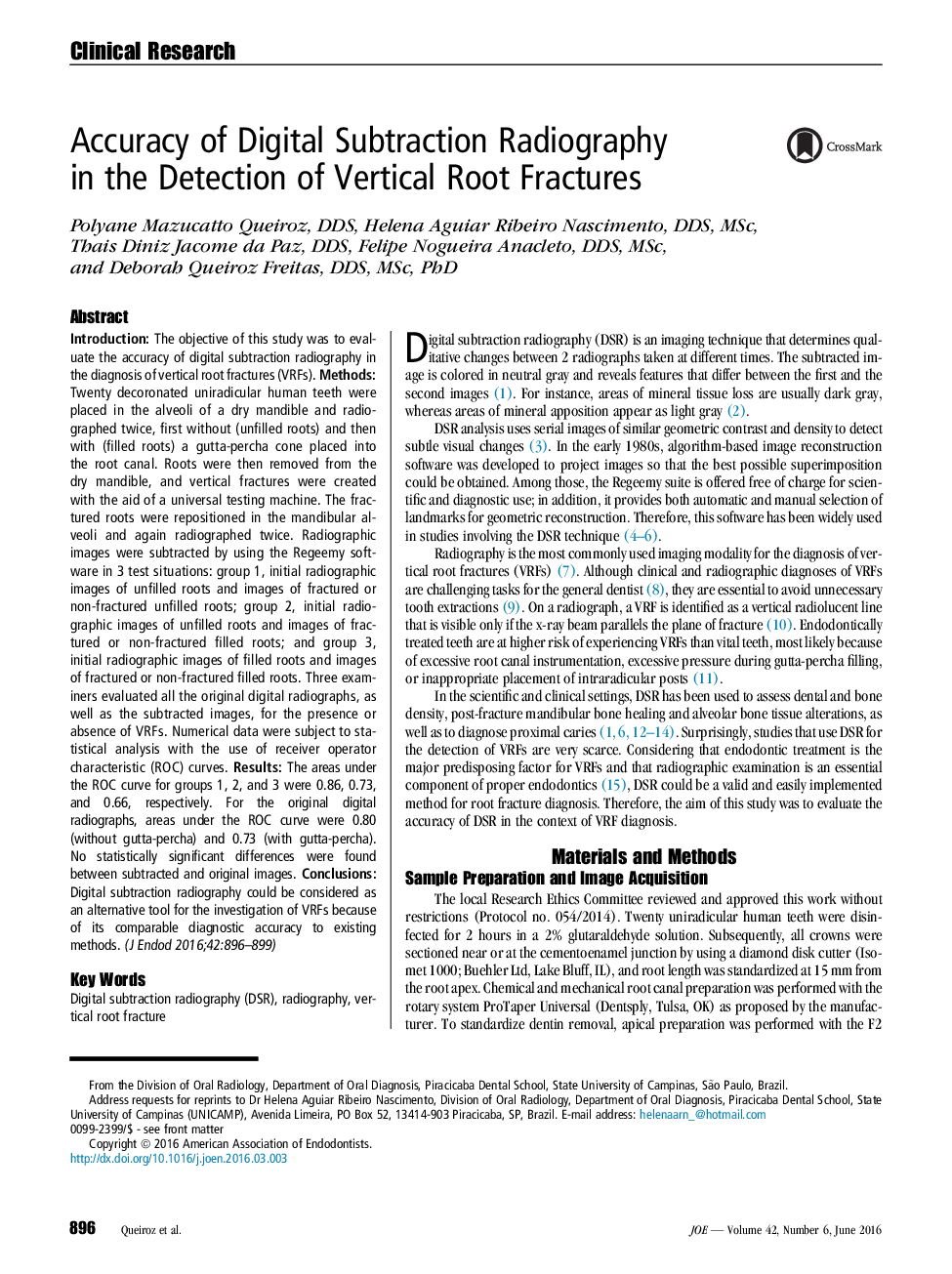| Article ID | Journal | Published Year | Pages | File Type |
|---|---|---|---|---|
| 3146508 | Journal of Endodontics | 2016 | 4 Pages |
IntroductionThe objective of this study was to evaluate the accuracy of digital subtraction radiography in the diagnosis of vertical root fractures (VRFs).MethodsTwenty decoronated uniradicular human teeth were placed in the alveoli of a dry mandible and radiographed twice, first without (unfilled roots) and then with (filled roots) a gutta-percha cone placed into the root canal. Roots were then removed from the dry mandible, and vertical fractures were created with the aid of a universal testing machine. The fractured roots were repositioned in the mandibular alveoli and again radiographed twice. Radiographic images were subtracted by using the Regeemy software in 3 test situations: group 1, initial radiographic images of unfilled roots and images of fractured or non-fractured unfilled roots; group 2, initial radiographic images of unfilled roots and images of fractured or non-fractured filled roots; and group 3, initial radiographic images of filled roots and images of fractured or non-fractured filled roots. Three examiners evaluated all the original digital radiographs, as well as the subtracted images, for the presence or absence of VRFs. Numerical data were subject to statistical analysis with the use of receiver operator characteristic (ROC) curves.ResultsThe areas under the ROC curve for groups 1, 2, and 3 were 0.86, 0.73, and 0.66, respectively. For the original digital radiographs, areas under the ROC curve were 0.80 (without gutta-percha) and 0.73 (with gutta-percha). No statistically significant differences were found between subtracted and original images.ConclusionsDigital subtraction radiography could be considered as an alternative tool for the investigation of VRFs because of its comparable diagnostic accuracy to existing methods.
